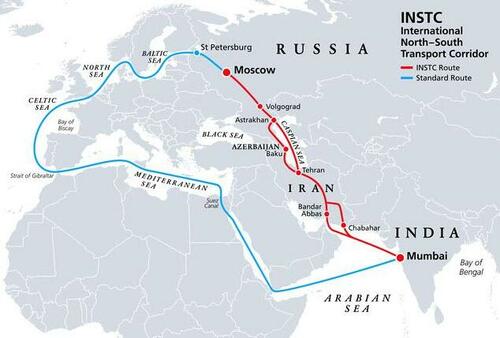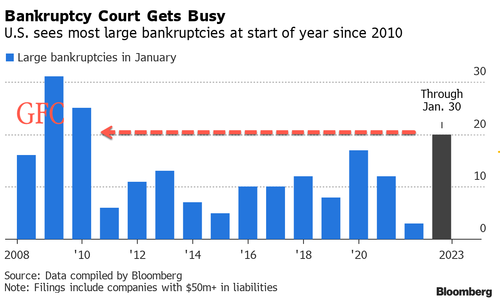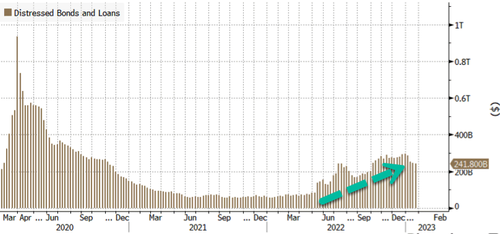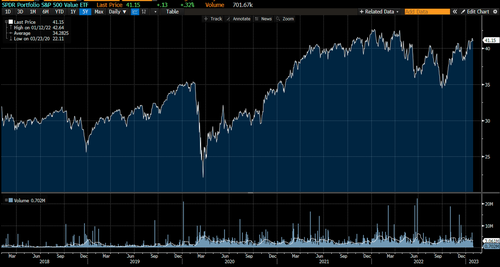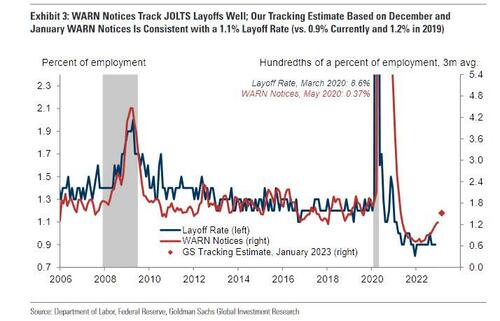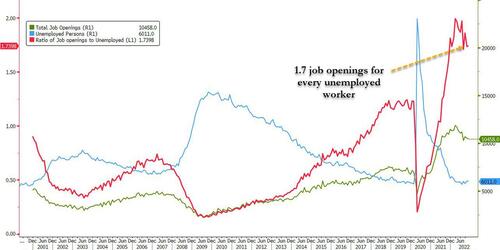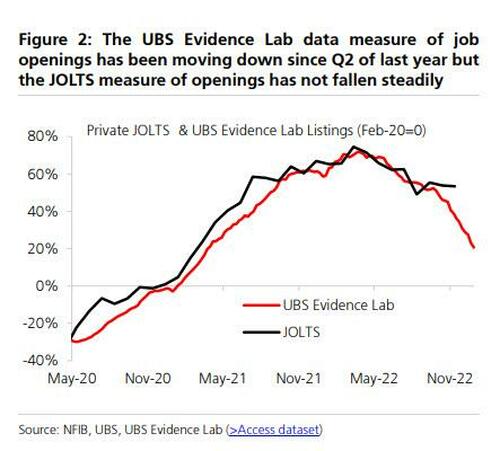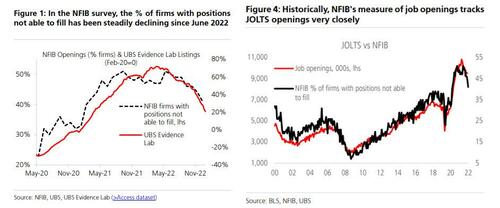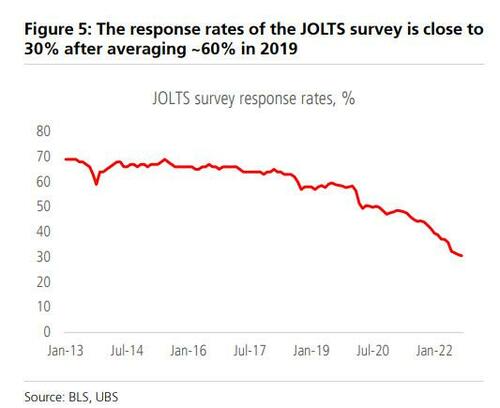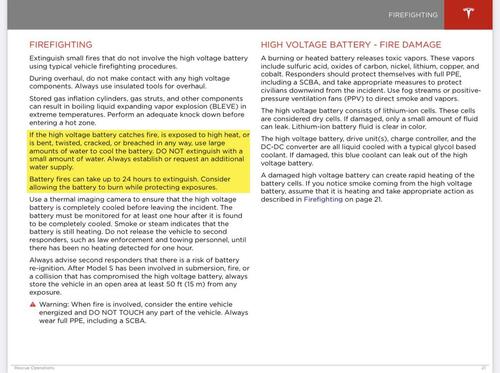Russia's "Sanction-Proof" Trade Corridor To India Frustrates The Neocons
Authored by Conor Gallagher via NakedCapitalism.com,
Russia, Iran, and India are speeding up efforts to complete a new transport corridor that would largely cut Europe, its sanctions, and any other threats out of the picture.
The International North-South Transport Corridor (NSTC) is a land-and sea-based 7,200-km long network comprising rail, road and water routes that are aimed at reducing costs and travel time for freight transport in a bid to boost trade between Russia, Iran, Central Asia, India.
For Russia, the “sanction-proof” corridor provides a major export channel to South Asia without needing to go through Europe. But Brussels and Washington, frustrated by their losing in Ukraine and inability to put much of a dent in the Russian economy, could lead them to take more desperate measures.
Read MoreLately, Estonia, which has a population smaller than Russia’s armed forces, has been making noise about causing problems in the Gulf of Finland, Estonian Minister of Defense Hanno Pevkur is talking about how Helsinki and Tallinn will integrate their coastal missile defense, which he says would allow the countries to close the Gulf of Finland to Russian warships if necessary. Estonia is also floating the possibility of trying to inspect Russian ships. From Asia Times:
It is unlikely Estonia can carry out any inspections given that it only has two patrol vessels (EML-Roland and EML-Risto) and no other warships except some mine layers. But if Estonia even tried, it would create another friction point that Russia could exploit if it chose.
There is also a strategic element. With Finland joining NATO and already a de facto member, the Gulf of Finland becomes significantly more hostile for Russia and there will be growing pressure on Russian political leaders to take action against a rising threat to Russian security.
While Ukraine is far away, the Russians see NATO’s “ganging up” on Russia as a key issue for Russian security and stability. This brings the Baltic region into sharper focus because Russians see NATO trying to surround them and undercut their economic and military advantages.
It’s hard to take Estonia’s bluster seriously but equally difficult to put anything past the neocons in Washington and their adherents in the Baltics. Regardless, Russia would prefer a trade route with India that saves time and money and avoids Europe.
©Peter Hermes Furian
While NATO’s war against Russia has sped up the cooperation between Moscow, Tehran, and New Delhi, India and Iran are coming under various types of pressure that could delay full implementation of the corridor. And Azerbaijan, a key nexus in the INSTC, is a wildcard as it grows increasingly confrontational with both Iran and Armenia.
First the recent developments on the INSTC:
-
India is helping to develop the Shahid Beheshti Terminal at Iran’s Chabahar Port in cooperation with the Iranian government.
-
Iran and Russia recently signed a contract for Russia to build a cargo vessel for Iran to be used at the Caspian port of Solyanka, which is being developed jointly by the two nations as part of efforts to strengthen the Caspian Sea transportation network.
-
RZD Logistics, a subsidiary of Russian railway monopoly RZD, has begun regular container train services from Moscow to Iran to serve growing trade with India by transloading.
-
Rezaul Hasan Laskar, the foreign affairs editor at Hindustan Times, says the strategic Chabahar Port in southeastern Iran has “become more important following its growing use” but that “it needs to be connected to Iran’s railway network.” Iran has accelerated that project, and with an investment boost from Russia, is speeding up the completion of the Astara-Rasht-Qazvin railway, another transport corridor that will connect existing railways of Russia, Azerbaijan and Iran to the INSTC.
In the meantime, most of the goods that Russia normally transported across the Baltic Sea to reach the North Sea port of Rotterdam now sail instead to India. Oilprice reports:
Russian crude oil loadings from Baltic ports are on track for a 50% hike from December to January, Reuters reports, citing its own data combined with trader insights.
Russian Urals and KEBCO crude oil loadings specifically from the ports of Primorsk and Ust-Luga will experience the increase, Reuters said, adding that the bulk of those loadings (some 70%) will head to India.
In December, Russia loaded 4.7 million tonnes of Urals and KEBCO from the Baltic ports, Reuters said, citing Refinitiv data.Russia now accounts for approximately 25% of India’s crude purchases, while some sources put it closer to 30%.
The increased trade with Russia is a primary driver bringing New Delhi and Tehran closer together – largely a result of Europe severing itself from Russia. According to Reuters, at the end of November Moscow sent India a list of more than 500 products it wants India exporting to Russia, “including parts for cars, aircraft and trains.” The report added:
Indian imports from Russia have grown nearly five times to $29 billion between Feb. 24 and Nov. 20 compared with $6 billion in the same period a year ago. Exports, meanwhile, have fallen to $1.9 billion from $2.4 billion, the source said. India is hoping to boost its exports to nearly $10 billion over coming months with Russia’s list of requests, according to the government source.
And with all the increased trade, New Delhi and Moscow are looking for more efficient supply lines. A study, conducted by the Federation of Freight Forwarders’ Associations in India, showed that INSTC will be 30 percent cheaper and 40 percent shorter than the existing routes. And according to the Russian Journal for Economics, freight traffic on the NSTC could reach 25 million tons by 2030, a 20-fold increase. For these reasons the NSTC is of vital importance to Russia, as well as a source of frustration for the neocons in DC and their foot soldiers in Europe.
Strangely enough, even if they found a way to sever the Russia-India link, Europe would have to find a new seller of oil. For months India has been getting Russian oil at a discount and selling it to the EU at substantial profits. According to Michael Tran, global energy strategist at RBC Capital Markets:
India is buying record amounts of severely discounted Russian crude, running its refiners above nameplate capacity, and capturing the economic rent of sky-high crack spreads and exporting gasoline and diesel to Europe. In short, the EU policy of tightening the screws on Russia is a policy win, but the unintended consequence is that Europe is effectively importing inflation to its own citizens. This is not only an economic boon for India, but it also serves as an accelerator for India’s place in the new geopolitically rewritten oil trade map. What we mean is that the EU policy effectively makes India an increasingly vital energy source for Europe. This was historically never the case, and it is why Indian product exports have been clocking in at all-time-high levels over recent months.
It’s not hard to see why India has steadfastly refused to join the sanctions parade on Russia despite pressure from the west and continues to pursue the NSTC.
Indian Prime Minister Narendra Modi is now dealing with a major infrastructure crisis, however.
The Adani conglomerate, which is led by Asia’s richest man who has very close ties to the Modi government, has lost billions in recent days following a report from New York City-based Hindenburg Research, which specializes in short-selling overhyped stocks. Adani owns everything from ports to coal mines and is heavily involved in all types of Indian infrastructure, which means the fallout could affect all corners of the economy – and Modi. Adam Tooze writes at Chartbook:
But what if the biggest promoter-political-capitalist of all were to come under unsustainable pressure? It is not only inequality and power imbalances that are at stake, but the financial stability of the Indian economy. …
Were Adani to find itself in real trouble, there can be little doubt that the real anchor would be the state. Adani’s rise and the fortunes of Modi and the BJP are closely tied. ..
A more serious risk is that the panic spreads from Adani throughout the financial markets, forcing the Modi administration to make painful choices. As Bloomberg reports the shock and anxiety is catching especially amongst global investors who may swiftly reevaluate their weighting of Indian assets.
It wasn’t exactly a secret that the Adani conglomerate was on shaky ground. As Tooze notes, Credit Suisse warned all the way back in a 2015 “House of Debt” report that “the Adani Group was one of 10 conglomerates under ‘severe stress’ that accounted for 12 percent of banking sector loans. Yet the Adani Group has been able to keep raising funds, in part by borrowing from overseas lenders and pivoting to green energy. ”
The widely cited Hindenburg investigation doesn’t just go after Adani, but it also argues his success is tied to the government (and Modi) supporting him nearly every step of the way. Modi is already dealing with the headache of the recently-released BBC documentary about the 2002 Gujarat riots that highlights a previously unpublished, two-decades-old British Foreign Office report claiming Modi was “directly responsible” for that communal riot during his tenure as Gujarat’s chief minister. Andrew Korybko, a Moscow-based political analyst believes the documentary is part of efforts to pressure Modi and writes:
It’s suspicious that the previously unpublished British Foreign Office report was highlighted by state-run BBC over two decades after it was written, shortly after the New York Times (NYT) implied that externally exacerbating communal tensions will be the West’s Hybrid War means of punishing India for [defying the West on their anti-Russian sanctions], and around the time that India secured its rise as a globally significant Great Power. These observations suggest that the documentary’s timing wasn’t coincidental.
Modi remains highly popular, and a weak and divided opposition isn’t considered much of a threat, but the fallout from the Adani affair could change that. Just two weeks ago Adani was enjoying Davos and having discussions with Azerbaijan President Ilham Aliyev about petrochemical and mining projects in Azerbaijan. The West has also recently taken a great deal of interest in Azerbaijan’s energy future. From The Cradle:
On 7 December, 2022, the World Bank released a report titled “Azerbaijan: Towards Green Growth” in which the authors stated that the:
“Global transition towards a low-emissions economic model offers opportunities for Azerbaijan to be globally and regionally competitive. To make the best of it, Azerbaijan needs to focus on decarbonizing and diversifying the economy, bolstering innovation, and natural and human capital development.”
From this Green New Deal agenda, Azerbaijan would certainly receive funding, but in doing so, it would be handicapped from developing its vast resources or playing a positive role in either the Middle Corridor or the INSTC.
Five days later, the World Bank agenda was re-emphasized by USAID at a conference co-sponsored with the Azerbaijan-US Chamber of Commerce, the White House, and the Embassy of Azerbaijan.
Azerbaijan, which is a key nexus of the NSTC, is threatening to throw a wrench in the plans as relations between Baku and Tehran deteriorate.
On Jan. 27, an attack by a gunman carried out at Baku’s embassy in the Iranian capital left the head of the embassy’s security services dead and two security guards injured. Azerbaijan has now evacuated the diplomatic post. The next day, just as Secretary of State Antony J. Blinken was beginning a visit to Israel and after CIA William J. Burns director just concluded a visit, Israel launched a drone attack on Iran. Aside from its other implications, the Israeli attack will further strain Azeri-Iranian relations due to Baku’s close military relationship with Israel.
A more than month-long Azerbaijani blockade of ethnic Armenian-controlled territory is also causing concern in Tehran and Moscow as another conflict between Armenia and Azerbaijan would be a major headache for the NSTC – although Russian-Iranian maritime connectivity across the Caspian Sea could bypass Azerbaijan.
Both Iran and Azerbaijan have held major military exercises on the countries’ border in recent months. During recent protests in Iran, Tehran blamed Baku for using ethnic Azerbaijanis in Iran to destabilize the situation, which is something the neocons have long written about doing. The Middle East Media Research Institute, which is run by Israeli and American spooks, wrote as recently as November about using Azerbaijanis in Iran to further their goal of regime change:
In order to bring about regime change at home and contain Iranian expansionism abroad, Iran needs to be weakened from within. The international community therefore must engage Iran more effectively inside its borders through pursuing a “periphery strategy,” i.e., supporting the ethnic minorities found in its border regions. This will achieve two goals. First, ethnic minorities would finally enjoy the freedom and human rights they have been deprived of since the early 20th century. Second, this would deprive Iran of human and natural resources it needs to perpetrate its malign expansionism in the Middle East.
An array of democratic ethno-nations in the periphery of Iran would create a “great wall” around the country. This “wall” would stretch from the Kurdish areas of Northern Khurasan to the Persian gulf in the west including Azerbaijan, Kurdistan and Khuzistan as well as Balochistan in the southeast and would limit Iran’s access to the outside world and consequently end its geostrategic importance regionally and internationally.
For some idea of how this is playing out and the consequences, Responsible Statecraft writes:
The Iranian angle is certainly one of the key reasons behind the hawks’ enthusiasm for Azerbaijan. During the war in 2020, they cherished the dream that Azerbaijan’s military success would galvanize Iran’s sizable Azeri community against the government in Tehran. That naïve hope failed to materialize as Iranian Azeris are part and parcel of Iranian society. However, the anti-Iranian irredentist narratives gained popular currency within Azerbaijan to a degree not seen since the early 1990s. Websites with close links to the regime’s security apparatus and defense ministry issued open calls for “southern Azerbaijanis” to secede from Iran.
That was done in response to some outlandish anti-Azerbaijani remarks allegedly uttered by a retired Iranian diplomat and leaked to a Turkish newspaper. The diplomat in question, however, in no way represented the official position of the Islamic Republic. What followed — a seemingly coordinated incitement of anti-Iranian separatism in Azeri pro-regime media outlets — certainly looked like a massive over-reaction.
Pro-Azerbaijan hawks in Washington may thrive on fomenting such tensions, yet that in no way serves U.S. interests. A military conflict between Azerbaijan and Iran would suck in other countries, such as NATO ally Turkey, which would back Azerbaijan. It would most likely also involve Israel as Baku’s close ties with Jerusalem are seen as a serious threat in Tehran. Israeli officials occasionally behave as if they are keen to add fuel to the fire. The Israeli ambassador in Azerbaijan recently posed with a book of “fairy tales of Tabriz.” Given that Tabriz is the unofficial capital of Iranian Azerbaijan, many Iranians perceived this gesture as an endorsement of the Azeri separatist agenda. A regional vortex involving Iran and Israel would increase pressure from Congress on any U.S. administration to intervene on behalf of Israel.
Baku is closely aligned with Israel and Türkiye, but also maintains strong ties with Russia. Azerbaijan and Türkiye want a direct link across southern Armenia, which alarms Iran. This “Zangezur corridor” that Baku and Ankara want would connect Azerbaijan’s mainland territory to its Nakhichvan exclave that borders Armenia, Iran and Türkiye.
Such a corridor is a red line for Tehran as it would cut off Iran from Armenia and encircle northern parts of Iran by Türkiye and Azerbaijan, which scares Tehran because there are roughly 25 million Azeri-speakers in Northern Iran that might get some pan-Turkic ideas. Iran would also lose its land route through Armenia to the Caucuses.
Therefore, anytime there is fighting between Azerbaijan and Armenia, which many observers think is on the verge of starting again, it threatens a wider war if Azerbaijan and Türkiye try to form their corridor, if Iran comes to the defense of Armenia, or if outside actors use it as an opportunity to pursue other goals.
Russia used to exert a calming influence on the region, but its preoccupation with Ukraine has diminished its willingness to intervene. According to the Middle East Institute, the pressure on Iran’s government from inside and outside the country is helping lead to Baku and Tehran seeing each other’s actions as a threat and responding with quickly escalating countermeasures:
This self-reinforcing dynamic has created a spiral-like situation and increased the likelihood of conflict. A potential armed clash between Azerbaijan and Iran could have far-reaching consequences for the wider region that would likely draw in other powers, such as Turkey and Russia. It remains to be seen if cooler heads can prevail.
As former Indian diplomat M.K. Bhadrakumar wrote, “Azerbaijan is destined to play a key role in the great game in the period ahead.” It remains to be seen what that role will be. The neocons, who are quite good at manipulating others into quixotic wars, have dreams of using Azerbaijan to help topple the Iranian government, and unfortunately, Azerbaijan’s president has been compared to Sonny Corleone in “The Godfather.”
https://ift.tt/JVLbANG
from ZeroHedge News https://ift.tt/JVLbANG
via IFTTT



